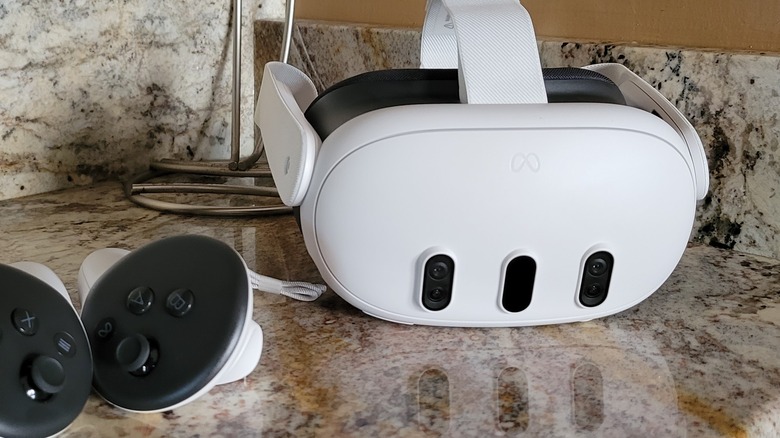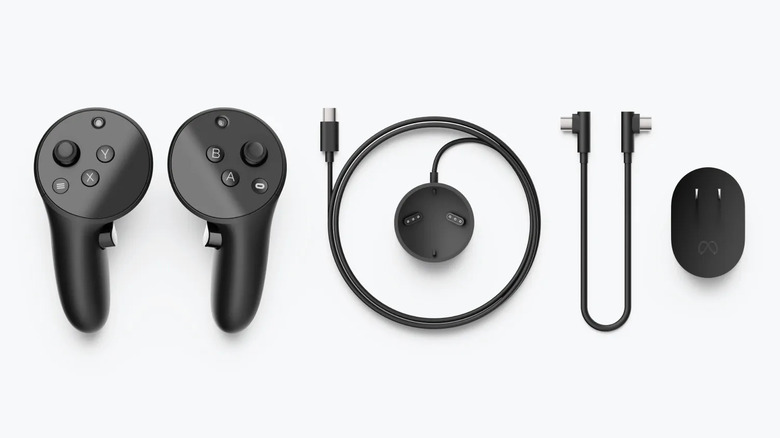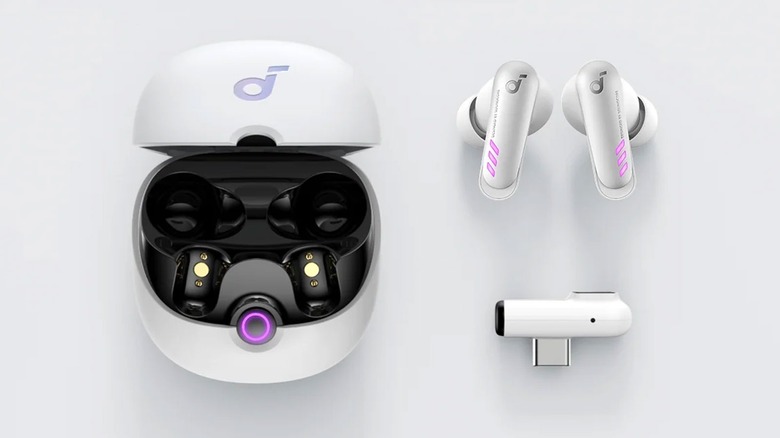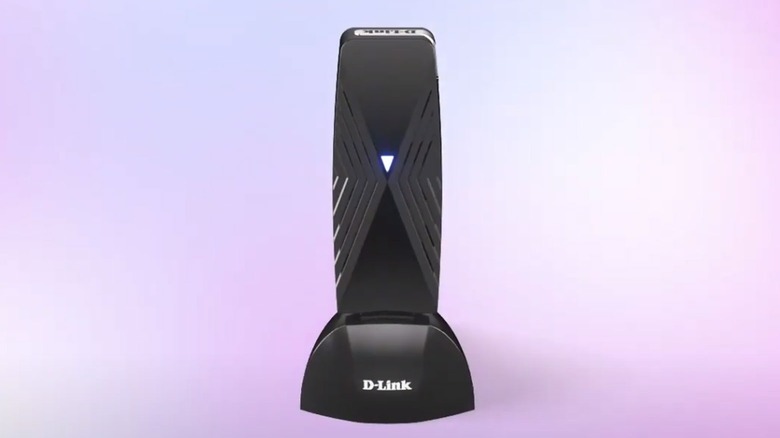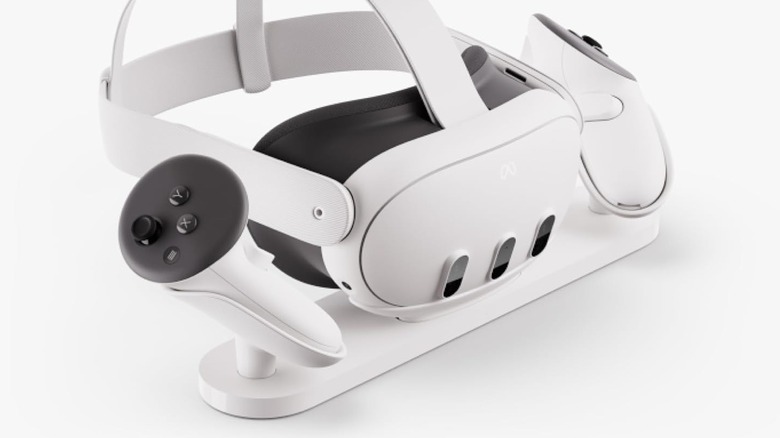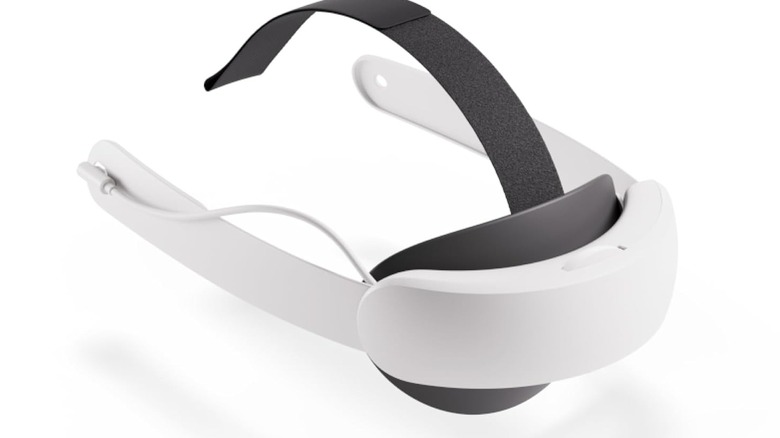Meta Quest 3 Accessories Tested: 4 You Absolutely Need (And 1 That Is A Waste Of Money)
We may receive a commission on purchases made from links.
Meta's Quest 3 is a tremendously functional headset that pushes forward from the wildly popular Quest 2. It features an improved passthrough experience, redesigned controllers, and the highest-resolution display Meta has built into one of its devices. But what if you want to enhance that experience even further? There's a large market for Quest Pro accessories that can increase comfort, battery life, and general functionality. We've tested out several to give you an idea of what's worth the money, and what you should avoid.
There is an argument that accessorizing the Quest 3 is just bringing it closer to the Quest Pro in terms of functionality and maybe even going beyond it in price. Some of these accessories cost several hundred dollars, so you may think opting for a Pro in the first place is better value. It isn't. The pricing of the basic Quest 3 gives users around $500 worth of spending money before it hits "Pro" levels, and at its core, the Quest 3 is a far better headset to begin with.
This list is comprised of devices we have personally tested. Some of that testing was brief, but the majority of the objects on this list have been part of our VR setup for months if not over a year. This list may also expand as we try out more accessories, but we believe we have covered a good selection of common accessories here.
The Pro Controllers are a waste of cash
If you really want to bring the Quest 3 closer to a Quest Pro, you can buy the same "Meta Quest Touch Pro Controllers" that are bundled with the premium device on their own. They come with their own processor and three cameras which allow for independent inside-out tracking. They're also slightly weightier, and have a premium feel in the hand.
The Meta Quest Touch Pro Controllers cost $300, though we've tried both and prefer the ones that already come with the Quest 3. The Quest 3's default controllers seem to track a lot more accurately, lose connection less often, and connect more quickly to begin with. The Pro controllers are a great idea on paper, but in our experience, they aren't worth the effort. Those tracking cameras make you more reliant on good lighting, which is a bit of an issue when you're swinging something around and potentially introducing it to shadows, limbs, or other obstacles.
Then there's the battery situation. The pro controllers have internal batteries, so you'll need to use the included charging dock to keep them topped up. They can live on the dock, but if they end up out of charge when you want to play, it'll take a while before you can use them. The standard Quest 3 controllers just take an AA battery. So you can pop a new one in and get going again immediately. There's also the option of buying a battery charger and some reusable AAs for less than $20 if you want to take the sustainable route and ensure you always have a spare battery on standby. Either way, it's a good idea to avoid the Quest Pro controllers altogether.
Soundcore P10 VR-specific Earbuds
While the Quest 3's built-in speakers do a good job, not everyone wants to listen to your VR activities. Those explosions, zombie moans, and golf swing sounds can be grating. Slapping on a set of earbuds or headphones also has the potential for improved sound quality and fewer immersion-killing real-world distractions.
Anker's Soundcore P10 will cost you around $107 — unless you find them on sale. These earbuds were designed specifically for the Quest 2, but function the same (and have the same features) when used with the Quest 3. While you can connect the earbuds via Bluetooth, the included dongle uses a 2.4 GHz signal to maintain an almost latency-free connection. As VR is one of those environments where any audio latency will be more apparent, this is a massive plus.
The dongle inserts into the Quest 3's USB-C port and has a USB-C port of its own which allows for passthrough charging. So you don't need to worry about limiting your battery life while using it. With regards to stability, this will depend on your individual ears, but our Soundcore earbuds stayed secure during most gameplay. Vigorous activity, such as boxing or games involving lots of dodging, may cause one to work loose and fall to the floor though.
As for the battery life of the earbuds themselves, Anker promises six hours of playtime with a further 24 hours worth of charge stored in the earbuds' case. You can also connect the headphones to a cell phone via Bluetooth and use them to take calls mid-game if needed.
In terms of reliability, we've been using these as our go-to VR audio option for around a year now. This has included use on multiple headsets, and the occasional piece of general earbud use when we were rushing out of the house and nothing else was handy. We haven't experienced any issues.
A streaming dongle
The Quest 3, like its predecessors, is a standalone headset. You can slap it on, and there's enough under the hood to power to play a large selection of games and AR experiences. But underneath it all, it's still basically a cell phone strapped to some goggles. It can in no way compete with a gaming PC when it comes to processing power. But it doesn't have to. You can use your Quest Pro as a wireless PCVR headset thanks to the likes of Air Link and Virtual Desktop. Both programs stream games from a PC to the headset over a WiFi network. However, it's not just your PC that has to be on point.
You'll either need to use a WiFi 5 connection that's basically dedicated to VR or WiFi 6. The PC will also need to be wired to your router via ethernet. Then it's basically limited to your home, so people with gaming laptops will miss out. The solution to all of this is a WiFi dongle like the D-Link VR Air Bridge. This puts out its own signal you can connect the headset to. It's also a WiFi 6 signal, which the Quest 3 is capable of connecting to. WiFi 6 allows for far lower latency and higher bandwidth than WiFi 5, and the difference between the two while playing VR is night and day.
We've not had the D-Link VR Air Bridge for long, but we found the dongle easy to set up and use. The signal quality has been great, and we've also been able to take PCVR on the go with it. However, it is worth noting that some Amazon reviews mention reliability issues with this product. Alternatively, some newer Intel WiFi cards have a similar feature built into them.
The official charging dock
On the face of it, Meta's official Quest 3 charging dock just looks like a fancy stand, but it's actually a lot more than that. It provides a handy way to keep your headset fully charged when it isn't in use. The dock itself is long and slim, with two clips for the controllers, a handy groove for the headset to nestle into, and an LED light to tell you when things are fully charged. The dock can "wirelessly" charge your controllers too, if you use the included rechargeable batteries.
This feature gives you the best of both worlds when compared to the Quest Pro's rechargeable controllers. They can live on the dock and have a full charge when you need them, but you can also switch the rechargeable batteries out for some regular AAs if push comes to shove and your controllers are dead.
It is worth noting that a power adapter isn't included with the charging dock. You can just use the adapter that came with a Quest 3, but that's only 18W and the dock itself can make use of up to 45. So if you want actual fast charging, that's another expense on top of the $130 you've already handed over for the dock itself.
The official Elite Strap with Battery
Two of our biggest criticisms of the Quest 3 involve its elasticated strap and its battery life. Both of these problems will go away if you drop $130 on the "Elite Strap with Battery." The strap itself is easy to attach to the headset and comes in a halo configuration — meaning you can slip it on and tighten it appropriately with a wheel on the back. It feels far more comfortable and secure than the default strap. As a bonus that battery acts as a counterweight, taking a lot of pressure off your face and nose.
The battery part is arguably the most useful feature of the premium Elite Strap. It provides an additional two hours of charge which doubles the Quest 2's play time — on paper at least. In reality, how you're using your headset will dictate how long the batteries, actually last. In our testing, we found the strap boosted our playtime by one to two hours. We didn't spot any issues, but it is worth noting some Elite Strap owners have complained about the battery itself not charging, rendering the strap's main element useless.
While we haven't spent enough time with the strap to give a long-term verdict on it, we do hope Meta has learned from its past mistakes regarding build quality. The Quest 2's Elite Strap suffered from issues with its plastic, which led to some of the accessories cracking and breaking over time. Meta dealt with that situation well, issuing a recall and suspending production of the strap until the problem was fixed. Assuming that fix has carried over, this is arguably the best accessory you can currently get for the Quest 3. A cheaper, battery-free version of the strap is also available for just under $70.
